Maryland, a state steeped in American history, is home to several important Army forts that serve crucial roles in the nation’s defense.
These installations offer training and support to the troops stationed on their grounds and house various intelligence, research, and communication facilities essential for the United States military.
Among the notable Army bases in Maryland are the Aberdeen Proving Ground, Fort Meade, and Fort Detrick. The Aberdeen Proving Ground has been in use since 1917 and remains an essential research and development facility for the Army.
Fort Meade, the second largest Army installation by population, accommodates over 64,000 employees from various branches. Lastly, the U.S. Army Garrison Fort Detrick protects public health and promotes medical research and development.
Historical Background of Army Forts in Maryland
Early Fortifications
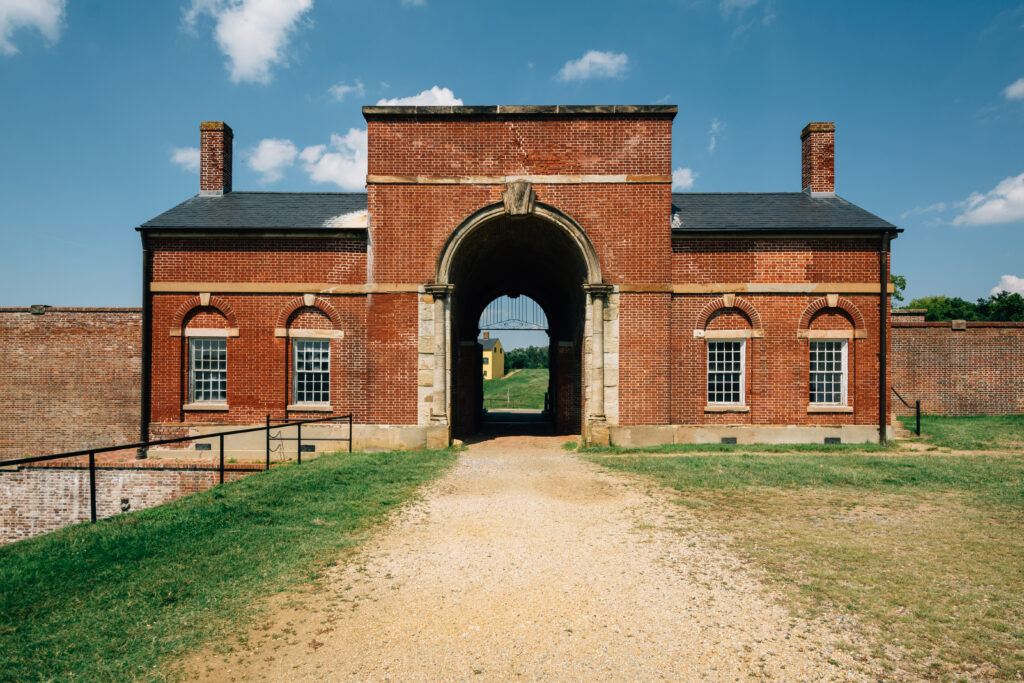
In the early days of Maryland’s history, various military installations were established to protect critical locations and maintain security, especially during conflicts with Native Americans. These military bases played a crucial role in the state’s early history and helped to shape its development.
One of the earliest fortifications in Maryland was Fort McHenry, built in the late 1700s to protect Baltimore Harbor. The fort played a crucial role in the War of 1812 when it successfully defended the city against a British attack.
Today, Fort McHenry is a national monument and historic site, and it is open to the public for tours and educational programs.
Another essential early fortification in Maryland was Fort Washington, built in the early 1800s to protect Washington, D.C., and the surrounding area. The fort was heavily damaged during the Civil War but was later restored and used as a military training center.
Today, Fort Washington is a national park and historic site, and it is open to the public for tours and recreational activities.
Civil War Era
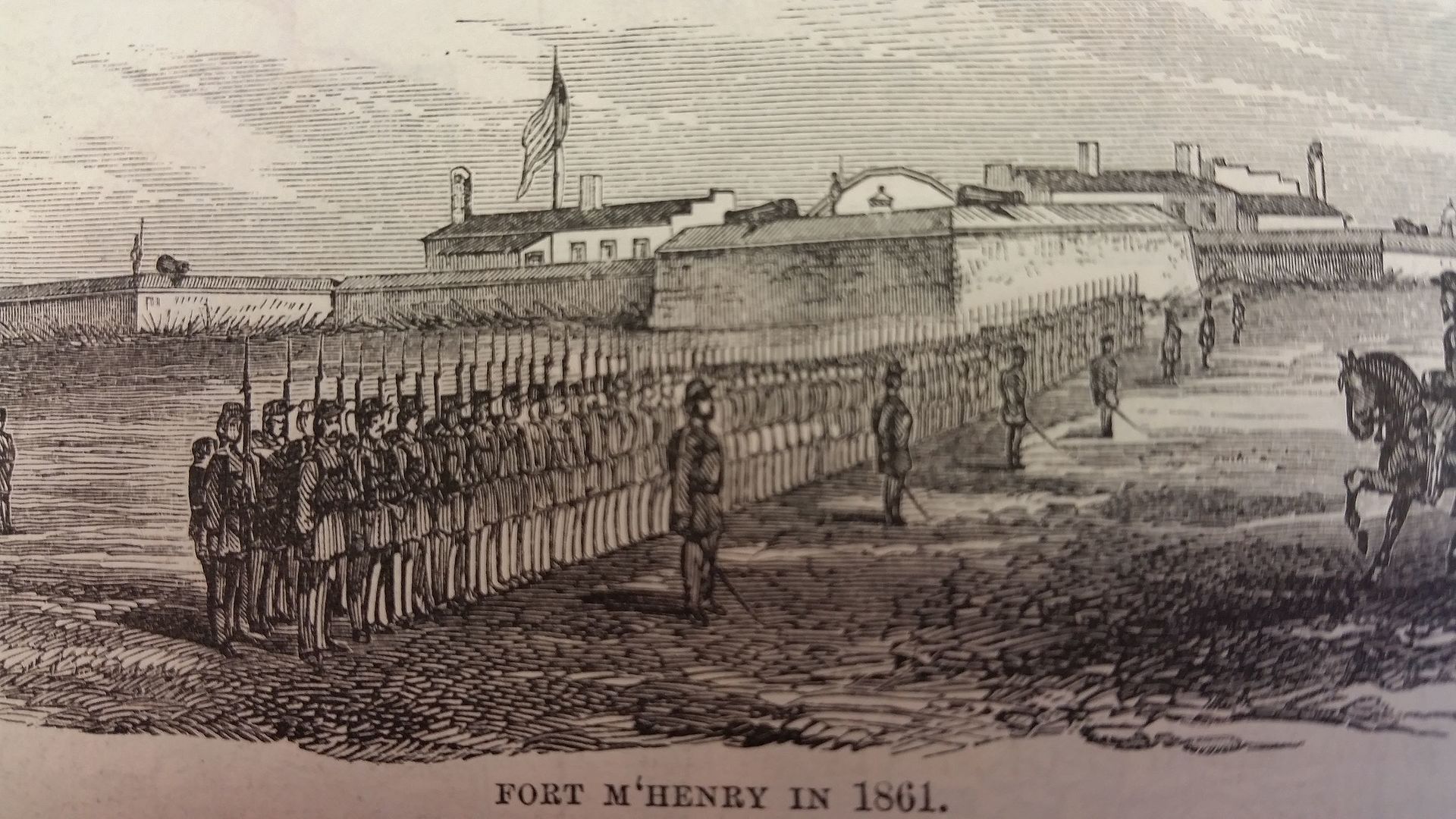
Maryland became an important strategic location during the Civil War due to its proximity to Washington, D.C., and its position between the North and the South.
The state’s location made it a key target for Union and Confederate forces and was the site of several important battles and military installations.
One of Maryland’s most famous military installations during the Civil War was Fort McHenry which played a vital role in the War of 1812. During the Civil War, the fort was used as a prison for Confederate soldiers and sympathizers.
It was also an important defensive position for Baltimore Harbor and played a key role in protecting the city from Confederate attacks.
Another important military installation during the Civil War was the Civil War Defenses of Washington, which consisted of a series of forts and defensive positions around the capital city.
These defenses were crucial in protecting Washington, D.C., from Confederate attacks and played a vital role in the Union’s victory in the war.
Civil War Battles
In addition to these military installations, Maryland was also the site of several important battles during the Civil War. One of the most significant was the Battle of Antietam, which occurred in September 1862 near Sharpsburg.
The battle was the bloodiest single-day battle in American history, with more than 23,000 casualties. The Union victory at Antietam was a turning point in the war and led to President Abraham Lincoln’s issuance of the Emancipation Proclamation.
Maryland’s strategic location and important military installations made it a key site during the Civil War. The state played a crucial role in protecting infrastructure such as railroads and ports, and it was the site of several significant battles that helped turn the tide of the war.
World War I and II
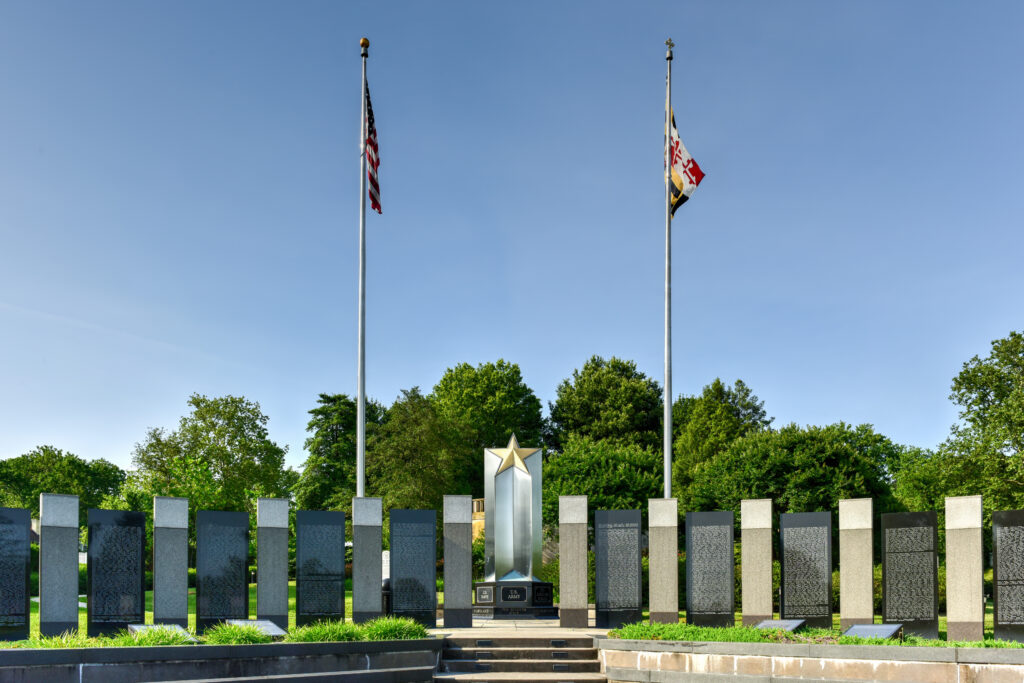
As the United States entered World War I and World War II, Maryland’s military bases grew in importance and played a critical role in the country’s national defense efforts.
These bases were crucial in training military personnel, developing and producing weapons and technology, and supporting the war effort in various ways.
One of the most important military bases in Maryland during World War I and World War II was Fort George G. Meade. Established in 1917, the base became a critical training center for military personnel and was crucial in preparing troops for deployment overseas.
During World War II, the base was also home to several vital agencies, including the Office of Strategic Services (OSS), the precursor to the Central Intelligence Agency (CIA).
Another critical military installation during World War II was the Naval Support Facility Indian Head in Charles County.
The base was established in 1890 and played a pivotal role in developing and producing weapons and technology for the Navy. During World War II, the base developed several vital weapons systems, including the Mark 14 torpedo and the proximity fuse.
Other Defense Facilities
In addition to these military installations, Maryland was also home to several other critical defense-related facilities during World War II.
These included the Glenn L. Martin Company, which produced a wide range of aircraft for the military, and the Bethlehem Steel Company’s Fairfield Shipyard, which produced Liberty ships for the war effort.
Maryland’s military bases and defense-related facilities played a crucial role in the country’s national defense efforts during World War I and World War II.
These installations trained military personnel, developed and produced weapons and technology, and supported the war effort in various ways, helping to secure victory for the United States and its allies.
Active Army Forts in Maryland
Fort Meade
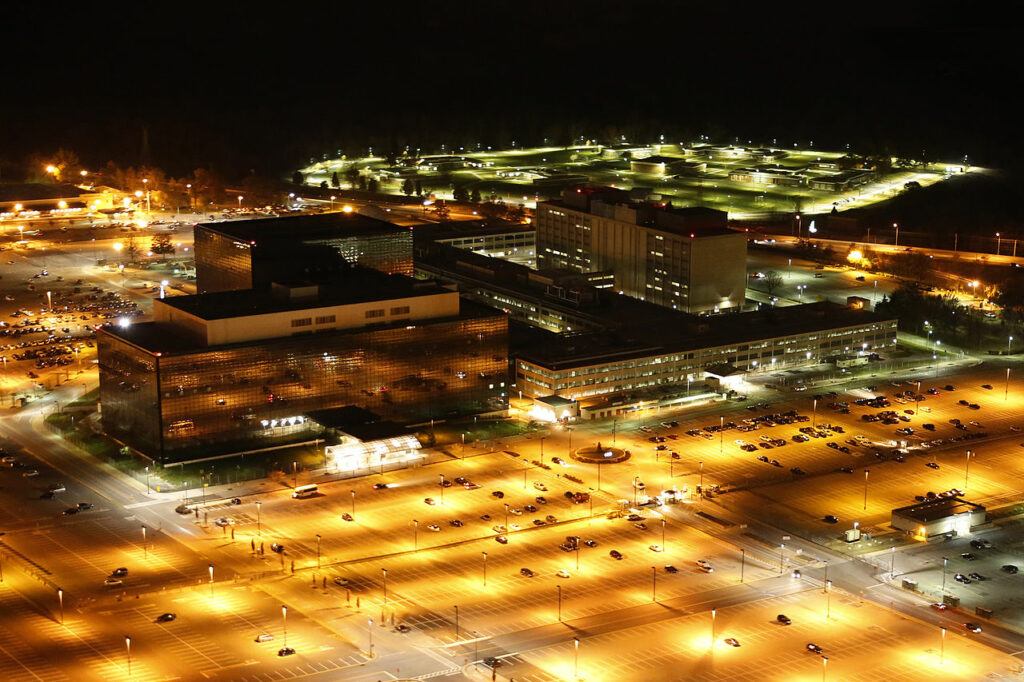
Fort Meade, also known as Camp Meade, is a United States Army installation in Maryland. It covers an area of approximately 5,000 acres and is situated between Baltimore and Washington, D.C.
The base was established in 1917 as a training ground for soldiers during World War I. It was named after General George G. Meade, a Union Army commander during the American Civil War.
Today, Fort Meade is the largest military base in Maryland and one of the largest in the country. It is home to more than 64,000 military personnel and civilian employees, making it the largest employer in the state.
The base is also an essential hub for the Department of Defense’s joint base initiatives, which aim to consolidate resources and improve efficiency across different military branches.
One of the most critical agencies housed at Fort Meade is the National Security Agency (NSA), responsible for collecting and analyzing foreign intelligence information.
The base also houses the Defense Information School, which provides training and education for military personnel in public affairs, visual information, and broadcasting.
In addition, the United States Cyber Command, which is responsible for defending the country against cyber attacks, is also located at Fort Meade.
Fort Detrick
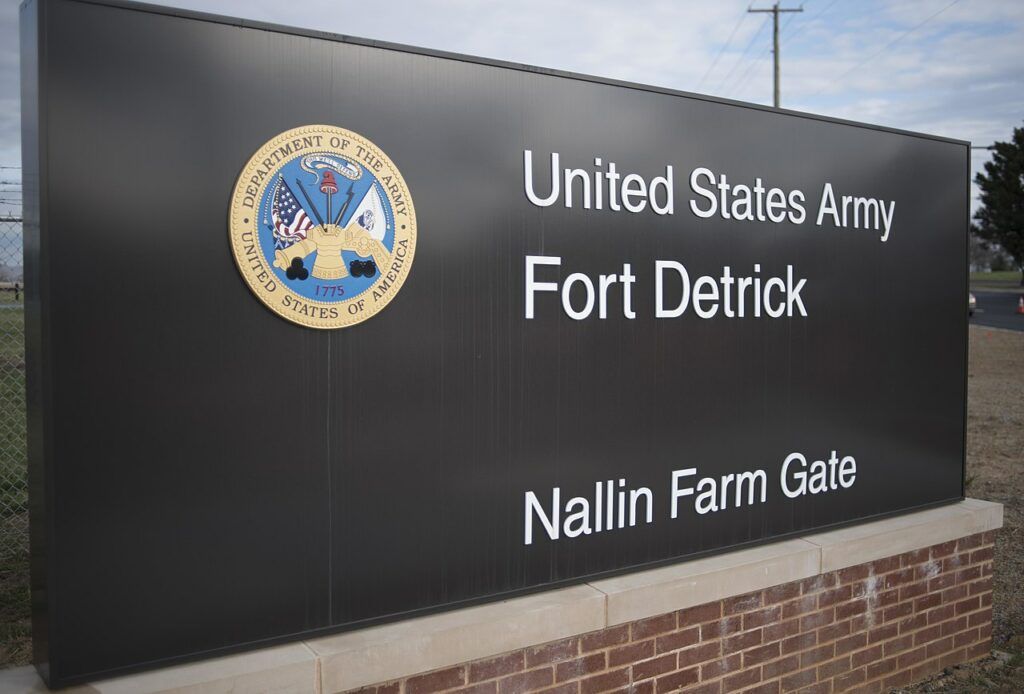
Fort Detrick was established during World War II as a biological weapons facility, but it has since evolved into a leading research center for the US Army’s medical and biological defense programs.
The base is known for its cutting-edge research and development in the fields of biodefense, infectious diseases, and cancer research.
One of the most prominent tenants at Fort Detrick is the National Cancer Institute, which researches cancer prevention, diagnosis, and treatment.
The institute has several research programs and facilities at Fort Detrick, including the Center for Cancer Research, the Division of Cancer Epidemiology and Genetics, and the Division of Cancer Treatment and Diagnosis.
Medical Research at Fort Detrick
Another vital tenant at Fort Detrick is the US Army Medical Research Institute of Infectious Diseases (USAMRIID), responsible for researching and developing medical countermeasures against biological warfare agents.
USAMRIID has been crucial in developing vaccines and treatments for Ebola, anthrax, and smallpox.
Fort Detrick has also benefited from the base realignment and closure acts, which have increased its overall size and responsibilities.
The base is home to several other critical agencies, including the National Biodefense Analysis and Countermeasures Center, the Joint Program Executive Office for Chemical and Biological Defense, and the Army Medical Materiel Development Activity.
Fort Detrick is a vital medical and biological research center in the United States. Its cutting-edge facilities and talented researchers have significantly contributed to biodefense, infectious diseases, and cancer research. It will likely be crucial to the country’s national defense and public health efforts.
Aberdeen Proving Ground
Aberdeen Proving Ground (APG) is located in Harford County, Maryland. Established in 1917, it is one of the oldest military installations in the United States.
The base covers an area of more than 72,500 acres of land and serves as a core testing and training center for the US Army and the Department of Defense.
APG’s primary focus is research and development, testing weapons systems, and providing training support for military personnel. The base has several essential facilities, including the Edgewood Arsenal, which focuses on chemical, biological, radiological, and nuclear capabilities.
The Edgewood Arsenal is responsible for developing and testing protective equipment and countermeasures against chemical and biological threats.
Another notable facility at APG is the Field Band headquarters, home to the United States Army Field Band. The Field Band is one of the premier musical organizations in the US Army and performs a wide range of music, from classical to jazz to pop.
In addition to its research and testing capabilities, APG provides training support for military personnel. The base has several training facilities, including a live-fire range, a combat training center, and a virtual training center.
Aberdeen Proving Ground is crucial to the country’s national defense efforts. Its research and development capabilities, testing facilities, and training support make it an essential military innovation and preparedness center.
Historic Army Forts in Maryland
Fort McHenry

Fort McHenry is a historic army fort located in Baltimore, Maryland. The fort played a crucial role in defending the city during the War of 1812 and remains a symbol of national pride, as it inspired Francis Scott Key to write the Star-Spangled Banner.
Today, the site serves as a National Monument and Historic Shrine for visitors to explore.
During the War of 1812, Fort McHenry successfully defended Baltimore Harbor against a British attack. The fort’s resilience inspired Francis Scott Key to write the Star-Spangled Banner, which would later become the United States national anthem.
Fort McHenry continued to play a key role in the country’s national defense efforts in the following years.
During World War I, Fort McHenry served as a training camp for many military personnel. The fort was also used as a hospital and a storage facility for military equipment.
World War ll
During World War II, the fort was used as a Coast Guard training center and was crucial in protecting Baltimore Harbor from potential attacks.
Today, Fort McHenry is a popular tourist destination and a symbol of American history and patriotism. Visitors can explore the fort’s various exhibits and learn its role in defending Baltimore Harbor during the War of 1812.
The site also hosts several events and educational programs throughout the year, including reenactments, concerts, and lectures.
Fort McHenry has a long and important history within the U.S. military.
From defending Baltimore Harbor during the War of 1812 to its use as a training camp during times of international conflict, the fort has played a crucial role in the country’s national defense efforts. Today, it remains an important symbol of American history and patriotism.
Fort Washington
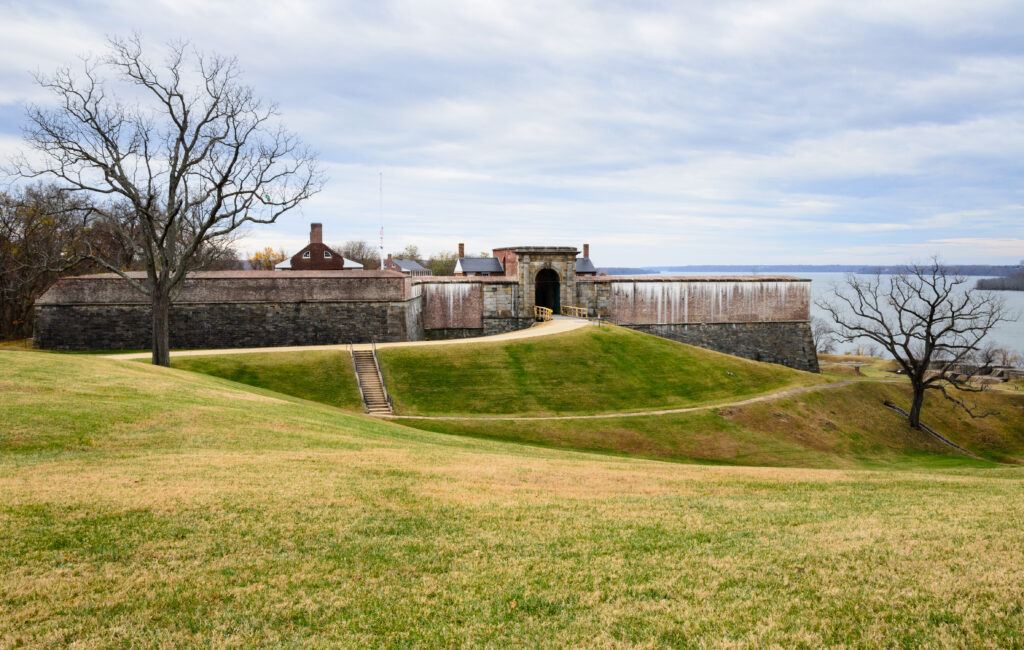
Fort Washington is a historical fort located along the Potomac River in Charles County, Maryland.. Established in the early 1800s, this fort served as a critical defense point for the nation’s capital, safeguarding it from naval threats throughout its history.
During the War of 1812, the British navy approached Washington, D.C., via the Potomac River and threatened to attack the city. In response, Fort Washington was built to protect the capital from a naval attack.
The fort was heavily damaged during the Civil War but was later restored and used as a military training center.
Today, Fort Washington Park allows visitors to explore the fort and learn about the site’s historical significance. The park also provides opportunities for outdoor recreational activities and stunning views of the Potomac River.
Fort Tours
Visitors can take a self-guided tour of the fort and learn about its role in protecting the nation’s capital during times of war.
In addition to the fort, the park also features several hiking trails, picnic areas, and scenic overlooks. Visitors can hike along the Potomac Heritage Trail, which offers stunning views of the river and the surrounding landscape.
The park hosts many events yearly, including living history demonstrations and educational programs.
These historic army forts highlight the rich military history of Maryland and the multiple roles the state has played in defending the United States throughout various conflicts.
Other notable military bases and installations in the state of Maryland include Fort Meade, Fort Detrick, Indian Head, Aberdeen Proving Ground, and the National Security Agency.
These bases provide essential support and services to the Department of Defense and various other governmental agencies and branches, such as the National Naval Medical Center (Bethesda Naval Hospital) and the Defense Information School at Fort George G. Meade.
Preservation and Tourism of Army Forts in Maryland
National Park Service
The National Park Service is essential in preserving historic military bases and forts in Maryland, such as Fort McHenry, which dates back to the Revolutionary War. They are dedicated to protecting these critical cultural and historical resources as part of their mission.
Maryland has several significant military facilities, including Fort Meade, Fort Detrick, Indian Head, Aberdeen Proving Ground, and the National Security Agency.
Visitor Centers and Tours
Many of these military bases and forts in Maryland offer visitor centers and guided tours for the public to learn more about their history and role in national defense.
For example, the Fort George G. Meade Museum, located at one of the largest military bases in Maryland, provides exhibits on military technology and the base’s history, dating back to World War II.
At Fort McHenry, visitors can explore the grounds and learn about its role in the War of 1812 and as a military prison during the Civil War. The Fort’s visitor center offers exhibits, films, and guided programs to provide an immersive experience for visitors.
- Fort Meade: Home to the Defense Information School, National Security Agency, and Military Personnel Office.
- Fort Detrick: Primarily focused on biological weapons defense and medical research.
- Indian Head: Located along the Potomac River in Charles County, it hosts the Naval Support Activity and Navy bases.
- Aberdeen Proving Ground: The largest military base in Maryland, located in Harford County.
In addition to the historic forts and military bases, Maryland is also home to the U.S. Naval Academy in Annapolis, which offers guided tours by appointment to learn about the academy’s history and the life of a midshipman.
Visitors interested in exploring more military installations in Maryland should consider visiting Joint Base Andrews, including the Andrews Air Force Base and the home of the President of the United States Air Force One.
Another interesting Maryland military site is Camp David, the presidential retreat in the Catoctin Mountain Park, operated by the National Park Service. While not open to the general public, the nearby Catoctin Mountain Park Visitor Center offers exhibits and information on the history of Camp David.

Cory is a website owner and content creator who enjoys fishing, history, coin collecting, and sports, among other hobbies. He is a husband and father of four.
Romans 15:4 For whatever was written in former days was written for our instruction, that through endurance and through the encouragement of the Scriptures we might have hope.


Was wondering why I can’t find any information on what I believe to be a old Nike site in Suitland Maryland (right on Silver Hill Road). It was eventually turned into barracks for NCO’s attending the National War College. Can’t find any mention of it or pictures on-line.
Hi Robert, I will look into it. Thanks for the question!